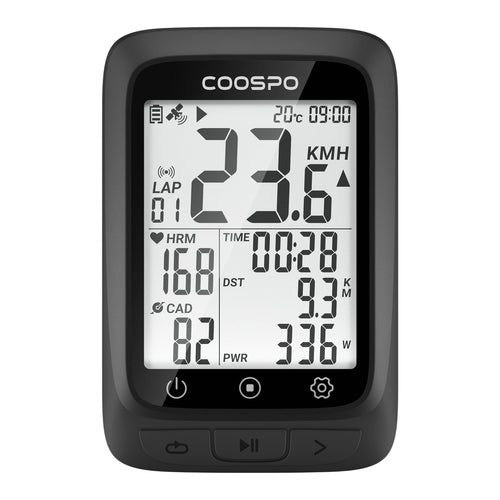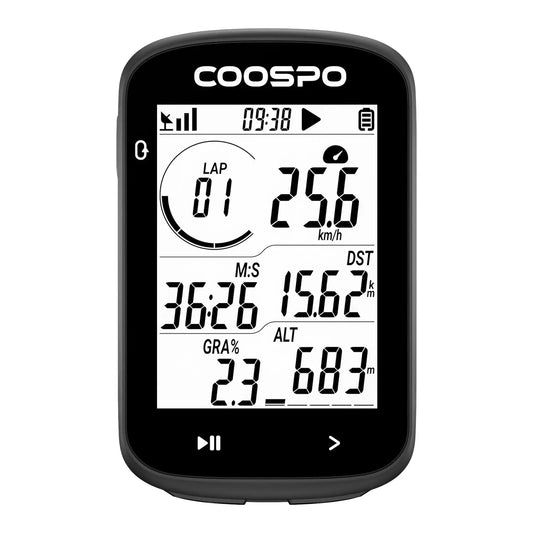Consejos para que los nuevos ciclistas aumenten la distancia de conducción
Consejos para que los nuevos ciclistas aumenten la distancia recorrida
El ciclismo es más que una actividad divertida, también es una excelente manera de mantenerse en forma y mejorar la salud. Si es la primera vez que practica ciclismo, es importante que se lo tome con calma y aumente gradualmente su resistencia y la distancia recorrida. Intentar hacer demasiado demasiado pronto puede provocar lesiones y contratiempos, por lo que es mejor ser paciente y constante con su entrenamiento.
Aumentar demasiado rápido el entrenamiento de ciclismo puede provocar lesiones y agotamiento. Esto puede suceder si recorres distancias más largas demasiado rápido o te esfuerzas demasiado antes de que tu cuerpo esté preparado.
Cuando nos esforzamos demasiado durante el entrenamiento aumentando la intensidad o la frecuencia demasiado rápido, nuestro cuerpo puede cansarse demasiado y no recuperarse adecuadamente. Esto puede dificultar la adaptación a los cambios que estamos realizando, lo que significa que terminamos trabajando más sin obtener los resultados que queremos.
Mejorar la distancia o la velocidad en bicicleta no se trata solo de seguir una fórmula establecida. Hay muchos factores, como las colinas, la dirección del viento y la velocidad, que pueden afectar la distancia y la velocidad a las que puedes ir en bicicleta. Y un ciclocomputador con GPS llevará tu recorrido al siguiente nivel. Por ejemplo, Computadora para bicicleta Coospo Equipado con todas las funciones esenciales como la distancia, podrás saber claramente cuánto has recorrido.

Pero andar en bicicleta es más fácil para el cuerpo que correr, por lo que puedes exigirte más y llegar más lejos.
Por lo tanto, podemos decir con seguridad que tu enfoque para aumentar la carga de entrenamiento es ligeramente diferente al de otros atletas de resistencia. Analizaremos consejos valiosos, respaldados por el asesoramiento de expertos y estudios científicos.

Establezca metas de ciclismo y programe recorridos regulares
En primer lugar, evalúa tus objetivos y cuánto tiempo puedes dedicar a montar cada semana. Establece objetivos a corto y largo plazo para tener una hoja de ruta para tu progreso.
Intenta fijarte objetivos como aumentar la distancia que corres cada semana en un porcentaje determinado o intentar completar una ruta específica en un tiempo determinado. Dividir los objetivos más grandes en metas más pequeñas y manejables puede ayudarte a planificar y organizar tus entrenamientos para alcanzar tus objetivos.
Práctica constante y tiempo de conducción
Comience con recorridos más cortos y vaya aumentando poco a poco hasta llegar a recorridos más largos e intensos.
Si eres nuevo en el mundo de la bicicleta, se recomienda montar durante 30 minutos a un ritmo relajado, tres o cuatro veces por semana durante al menos dos semanas. Si puedes hacerlo sin sentir dolor y aún tienes energía, puedes aumentar gradualmente el tiempo en un 10-15 % en la tercera semana.
Montar en bicicleta durante 30 minutos tres veces por semana durante la primera y la segunda semana, y luego añadir de tres a cinco minutos a cada paseo, o de 10 a 15 minutos a un paseo en la tercera semana. Continúe aumentando el tiempo de paseo cada semana con este método, hasta llegar a una hora o al máximo de horas que puede montar en bicicleta por semana, según los expertos.
Añadir intensidad
Una vez que hayas establecido un programa regular de montar varios días a la semana y hayas alcanzado el tiempo de montar semanal deseado, es hora de añadir algo de estructura e intensidad a tu entrenamiento. Incorpora días más difíciles y más fáciles para seguir progresando en tu entrenamiento.
En los días fáciles, pedaleas durante más tiempo a un ritmo lento, y en los días difíciles, haces algunos intervalos rápidos.
Se sugiere agregar entre 10 y 15 minutos de esfuerzo intenso en intervalos a un recorrido de una hora, con intervalos individuales que duren entre uno y cuatro minutos. A medida que se avanza hacia intervalos más largos, los esfuerzos continúan sumando intensidad.
No olvides realizar un seguimiento de tu Frecuencia cardíaca y potencia de ciclismo para ver qué tan duro y durante cuánto tiempo estás entrenando.
Puedes obtener una monitor de frecuencia cardíaca para rastrear su frecuencia cardíaca. Coospo HW9 Tiene una luz indicadora LED de 5 colores para el entrenamiento en zona de frecuencia cardíaca. Puede verificar su zona de frecuencia cardíaca en tiempo real mediante el color del LED en lugar de verificar su teléfono inteligente. Y puede configurar la función de vibración y LED a través del Paseo en Coospo La aplicación te recordará cuándo debes parar.

El monitor de frecuencia cardíaca Coospo también se puede conectar a la computadora de tu bicicleta, para que puedas verificar tu frecuencia cardíaca en tiempo real durante el recorrido.

Recuerda aumentar la intensidad gradualmente, siguiendo la regla del 10-15 %. Aumentar demasiado rápido puede provocar sobreentrenamiento.
Por último, no aumentes la duración del recorrido y la intensidad al mismo tiempo porque eso también puede provocar molestias durante el recorrido, como dolor de rodilla o de cuello o incluso síntomas de sobreentrenamiento.
El descanso es importante para mejorar
Andar en bicicleta con la mayor intensidad posible cada vez puede parecer una buena idea, pero es importante descansar lo suficiente para tener una buena rutina de entrenamiento. Los beneficios del ejercicio se obtienen durante la recuperación, no solo durante el entrenamiento.
Después de realizar entrenamientos exigentes, asegúrate de programar un día de descanso en tu calendario. Esto puede implicar un paseo de recuperación ligero a una intensidad menor o tomarte un día completo de descanso sin hacer ejercicio. También es una buena idea planificar una semana de entrenamientos más ligeros cada tres semanas.
Considere otros factores que afectan el progreso del entrenamiento
Hay muchos factores que pueden afectar el rendimiento de tu entrenamiento, no solo el paseo en bicicleta en sí. Comer los alimentos adecuados, beber suficiente agua y asegurarte de que la bicicleta se adapta a ti correctamente son aspectos importantes a tener en cuenta.
Alimenta tu cuerpo con una dieta equilibrada que incluya carbohidratos, proteínas y grasas saludables.
Mantenerse hidratado es importante, ya que no beber suficiente agua puede cansarte y afectar tu rendimiento. Asegúrate de beber suficiente agua antes, durante y después de tus recorridos, y ajusta la cantidad que bebes en función del clima y de la duración de tu recorrido.
Para paseos cortos en bicicleta (de una hora o menos), asegúrate de beber abundante agua con electrolitos antes de empezar. Bebe entre 480 y 580 ml dos horas antes de tu paseo y otros 230 ml unos 30 minutos antes. Para paseos más largos, consume entre 30 y 60 g de carbohidratos por hora y bebe entre 170 y 200 ml de líquidos cada 15 minutos, o entre 680 y 800 ml por hora.
Por último, asegúrate de que la bicicleta se ajusta a ti correctamente. Si sientes alguna molestia o dolor mientras conduces, como entumecimiento en las manos o dolor de espalda, puede ser una buena idea que un profesional ajuste tu bicicleta para que se ajuste mejor a ti.











